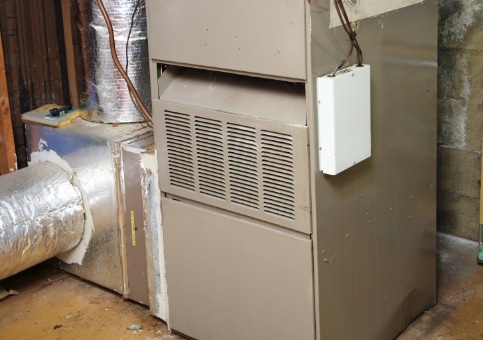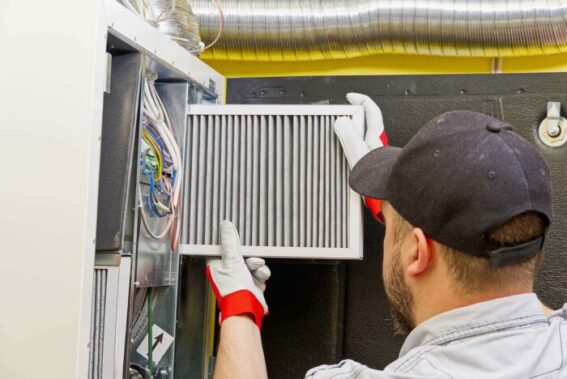
How to Know When It's Time to Replace Your Furnace: A Homeowner’s Guide
As a homeowner, ensuring that your home stays warm and comfortable during the colder months is a top priority.
Your furnace plays a key role in providing that comfort, but like all appliances, it doesn't last forever.
Over time, even the best furnace will show signs of wear and tear, and knowing when it’s time to replace it can help you avoid costly repairs and unexpected breakdowns.
In this blog post, we’ll explore the common signs that indicate it might be time to replace your furnace.
1. Age of the Furnace
The first factor to consider when deciding if it’s time for a new furnace is the age of the unit. On average, a furnace lasts between 15 and 20 years. If your furnace is approaching or exceeding this age, it may be time to start thinking about replacement, even if it’s still running. Older furnaces tend to become less energy-efficient and more prone to breakdowns, which can lead to higher repair costs over time.
2. Rising Heating Bills
If you’ve noticed an increase in your heating bills without a corresponding change in the weather or your usage patterns, your furnace may be losing efficiency. As furnaces age, they struggle to heat your home as effectively as they once did. An inefficient furnace will have to work harder to reach your desired temperature, consuming more energy and raising your utility bills. A new furnace will operate more efficiently, helping you save money in the long run.
3. Frequent Repairs
If you find yourself calling the repair technician more often to fix your furnace, it could be a sign that your unit is on its last legs. Common furnace problems like a malfunctioning blower motor, clogged filters, or cracked heat exchangers can become more frequent as your system ages. While some minor repairs may be necessary to extend the life of your furnace, if you’re facing major repairs or frequent breakdowns, replacing the unit may be a more cost-effective option.

4. Strange Noises
Unusual noises coming from your furnace can indicate that something is wrong. Banging, clanking, or rattling sounds may suggest that parts inside the furnace are loose or worn out. These sounds can signal issues like a damaged blower motor or a malfunctioning fan. While some noises can be fixed with minor repairs, others may be an indication that the furnace is nearing the end of its lifespan and a full replacement is needed.
5. Uneven Heating
If some rooms in your home are warm while others are cold, or if you notice inconsistent temperature control, your furnace may be struggling to distribute heat evenly throughout your house. Uneven heating could be a result of a number of factors, including ductwork issues, a failing furnace, or even a clogged filter. If you’ve addressed ductwork issues and regularly clean or replace your filters but still experience uneven heating, it may be time to consider a replacement.

6. Yellow or Flickering Pilot Light.
Your furnace’s pilot light should be blue. If it’s yellow or flickering, it could be a sign of a more serious issue, like a buildup of carbon monoxide. A yellow flame can indicate that your furnace is burning inefficiently, which could lead to dangerous situations or higher energy bills. If this happens, it’s important to have your furnace inspected immediately. In some cases, a pilot light issue may be fixable, but it could also indicate that your furnace is outdated and in need of replacement.
7. Frequent Cycling
A furnace that frequently turns on and off is not functioning properly. This short cycling can happen due to a number of reasons, including a dirty air filter, a malfunctioning thermostat, or a failing component. While some issues can be resolved with a simple repair, if your furnace is constantly cycling, it could be a sign that it’s no longer efficient enough to maintain consistent heat in your home. A new furnace will likely solve this issue and ensure your home stays comfortable.

8. Air Quality Issues
Your furnace plays a role in maintaining your home’s air quality. If you’ve noticed an increase in dust, dirt, or dry air, it may be due to an issue with your furnace. Older furnaces can have a harder time filtering out contaminants from the air, leading to poor indoor air quality. A new furnace with advanced filtration systems can help improve your home’s air quality and create a healthier living environment.
9. Furnace Is Constantly Running
If your furnace seems to be running non-stop without reaching the desired temperature, it may be time for a replacement. This could indicate that the furnace is no longer capable of adequately heating your home or that it’s struggling to maintain temperature. A properly functioning furnace should cycle on and off as needed to keep your home comfortable.
Conclusion
While replacing your furnace is a significant investment, recognizing the signs that it’s time for a new unit can help you avoid unnecessary repairs and keep your home comfortable. By paying attention to the age of your furnace, rising energy bills, frequent repairs, strange noises, and other warning signs, you can make an informed decision about whether it’s time to replace your furnace. If you're unsure, it's always best to consult with a licensed HVAC technician to assess the condition of your furnace and guide you in making the right choice for your home.
Don’t wait for your furnace to fail when you need it most. Stay proactive and ensure your home remains warm and cozy throughout the winter months!
Our Team of HVAC Experts is here to assist you!
We are ready to help you decide which furnace would best suit your needs.
I will never use another company for any of my furnace or air conditioning needs!!!! They took the time to explain everything to me and let me know what I really needed (which was not what someone else told me I needed). They were complete professionals and I would recommend them to anyone I know
Our primary reason for choosing Balance Point was the trustworthiness of the staff
Eric was very helpful, answered my questions and solved my problem quickly.
